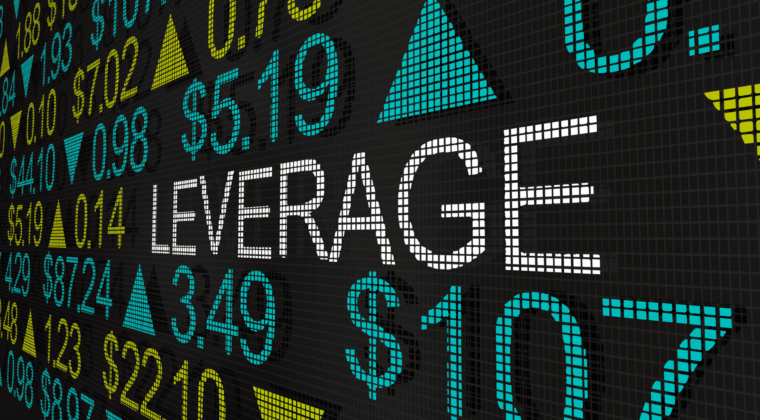
You might have heard the term “leverage” being used by traders or in the finance world, but what does it really mean? Leverage is a tool used by investors or traders to amplify their returns on an investment. It is a service offered by brokers or financial institutions that allows customers to enter larger positions with less capital.
For example, consider a forex trade in which an investor wants to go long on 1 standard lot (€100,000) of the EUR/USD forex pair at an exchange rate of 1.1000. The investor’s broker offers a leverage of 1:500 on this particular instrument. This means that the investor only needs to put up €200 as margin in order to enter into the trade.
If the EUR/USD exchange rate increases to 1.1005, the investor will make a profit of (1.1005 – 1.1000 ) * 100,000 = $50 when they close the position. If EUR/USD drops to 1.0995, the investor will make a loss (1.1000 – 1.0995 ) * 100,000 = $50.
In simplest terms, when holding a leveraged position, both losses and profits are based off the notional amount of your trade rather than your capital.
In the context of Contracts For Difference (CFDs), leverage allows investors to trade on the price movements of a financial instrument without actually owning the underlying asset. This means that investors can enter into a CFD trade with a smaller amount of capital than would otherwise be required to trade the underlying asset.

However, investors should also note that leverage is a double-edged sword. As seen in the EUR/USD example we have shown above, while a leveraged position can amplify profits, it also amplifies losses by the same amount.
Advantages of leveraged CFDs include:
Disadvantages of leverage include:

The relationship between leverage and margin is an important one to understand. Margin is the amount of capital that an investor must put up in order to enter into a leveraged trade. In the case of a CFD, the margin requirement will depend on the leverage level chosen by the investor or offered by the broker, which, in the case of PU Prime, is up to 1:500 on major FX pairs, gold, and crude oil.
Margin is always expressed as a percentage of the notional amount of a trade, denoting the capital needed to open that trade. For example, a 10% margin requirement on going long on 1 oz of gold will mean that $200 of capital is needed if gold’s current price is $2000.
Therefore, margin is always the inverse of leverage. As a formula:
Margin % = 1/Leverage
The higher the leverage level, the lower the margin requirement will be.
As mentioned earlier, leverage also presents a higher risk. This is why high leverages are only offered for highly liquid instruments like EUR/USD.
For traders looking to minimise their risk, some CFD brokers also provide flexible leverage options – forex traders on PU Prime can pick between 1:100 or 1:500 leverage on major forex pairs, gold, most indices, and crude oil.
However, higher leverages can be a powerful tool for experienced traders, opening up more opportunities for advanced trading strategies or even scalpers – especially since the latter relies on making quick decisions on small movements. For skilled traders looking for even more flexibility with their trading, PU Prime offers a pro account with up to 1:1000 leverage on selected products.
Find out more about PU Prime’s account types and their leverages here.

以行业低点差和闪电般的执行速度交易外汇、指数、贵金属等。
Please note the Website is intended for individuals residing in jurisdictions where accessing the Website is permitted by law.
Please note that PU Prime and its affiliated entities are neither established nor operating in your home jurisdiction.
By clicking the "Acknowledge" button, you confirm that you are entering this website solely based on your initiative and not as a result of any specific marketing outreach. You wish to obtain information from this website which is provided on reverse solicitation in accordance with the laws of your home jurisdiction.
Thank You for Your Acknowledgement!
Ten en cuenta que el sitio web está destinado a personas que residen en jurisdicciones donde el acceso al sitio web está permitido por la ley.
Ten en cuenta que PU Prime y sus entidades afiliadas no están establecidas ni operan en tu jurisdicción de origen.
Al hacer clic en el botón "Aceptar", confirmas que estás ingresando a este sitio web por tu propia iniciativa y no como resultado de ningún esfuerzo de marketing específico. Deseas obtener información de este sitio web que se proporciona mediante solicitud inversa de acuerdo con las leyes de tu jurisdicción de origen.
Thank You for Your Acknowledgement!